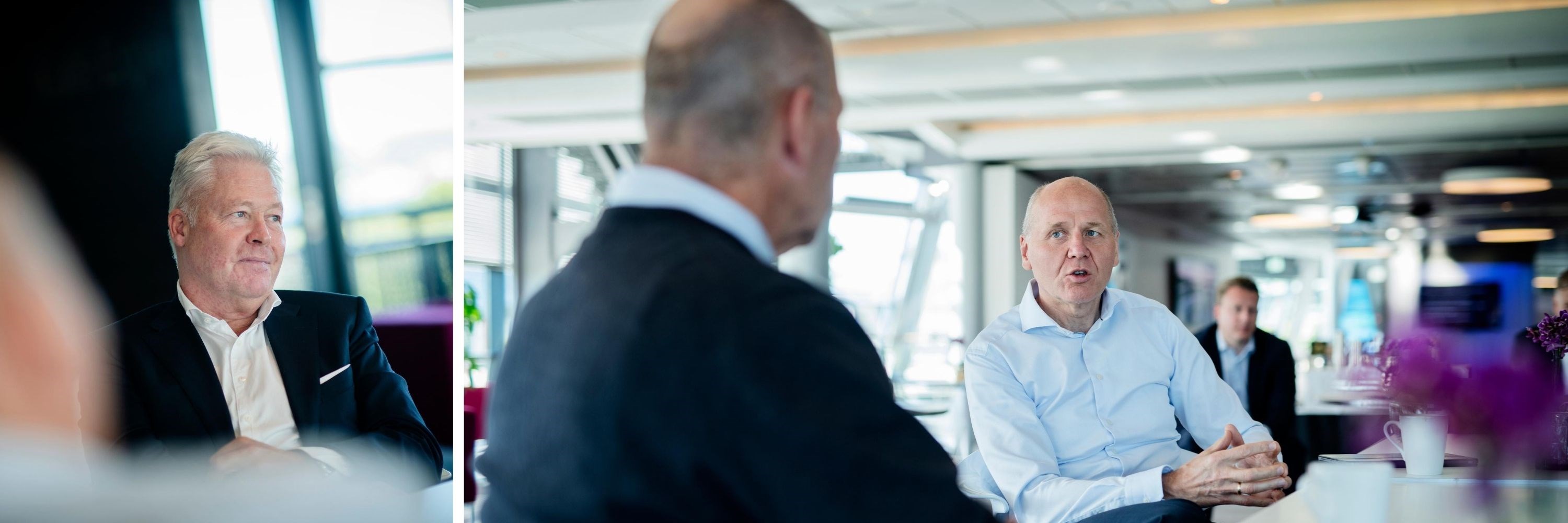
New centre to contribute to increased innovation success
‘We must bring the customers into the conversation about development work to a much greater extent,’ says Professor and Centre Director Tor W. Andreassen. 1 September is the launch of the NHH DIG centre.
The Norwegian School of Economics’ new centre Digital Innovation for Growth (DIG) aims to become the number one research environment for innovation in Norway. In close cooperation with a host of leading enterprises and research environments, the centre will contribute to the digital transition and innovation.
‘We've have been developing the idea and laying the foundations for NHH’s new research centre since 2016. The fact that we have managed to merge three well-established research centres – CSI, FOCUS and STOP – is fantastic and it provides the basis for a multidisciplinary approach to complex issues,’ says NHH Professor and Centre Director Tor W. Andreassen.
The launch is digital and can be followed online. Rector Øystein Thøgersen, DIG's chair of Board Jørgen Taalesen from Gjensidige, and Centre Director Andreassen will be among the speakers from the NHH campus.

About the centre
- Digital Innovation for Sustainable Growth (DIG) is a new national research centre based at NHH.
- Through interdisciplinary research and close cooperation with business and industry, the centre aims to help Norwegian organisations to increase the effect of their innovations, develop new business models and adapt the organisations to a digital world.
- Partners are Telenor, Gjensidige, Bergen municipality, TietoEVRY, Norway Post, the Norwegian Tax Administration, Abelia, Virke, NCE Finance Innovation, BEKK Consulting, the SNF Foundation, NTNU, UiO and SINTEF.
Eighty million to innovation research
The centre has a number of partners in the field of academia, business and the public sector. The business partners are contributing NOK 80 million to innovation research in the form of funding and in-kind contributions. Telenor and Gjensidige are the two biggest business partners.
On Monday this week, CEO Sigve Brekke from Telenor, CEO Helge Leiro Baastad from Gjensidige and Centre Director Andreassen met at Telenor's premises in Fornebu.
CEO Sigve Brekke says Telenor are partners of DIG because they believe interdisciplinary cooperation between different professional environments and businesses is essential to grasp the opportunities digitalisation presents.
‘As a strategic research partner, we get to cooperate with leading researchers and we can share and gain experience from a host of partners that have the same types of challenges and opportunities as us. The digital transition requires us to become better at cultivating the ability and willingness in leaders to explore and test new technological solutions. That is why I’m sure that a cooperation with NHH, which is a strong centre of expertise in management, is right for the future,’ says Brekke.
Must meet the needs of the customer
CEO Helge Leiro Baastad believes the innovation centre could constitute an important platform for Gjensidige to conduct research on how to use existing and new technology to create new values and strengthen their services for the customers.
‘DIG is also a unique arena in which to discuss sustainable development. We look forward to cooperating on Norwegian research in digital innovation together with our exciting partners from DIG. It gives us the opportunity to make a difference through contributing to applied research about how you can improve innovation and value creation,’ says Baastad.
The DIG centre will explore digital innovations and business models that create values in a more efficient way. The centre will among other things look into why nine out of ten innovation ideas flop because they are not sufficiently based on the market and customer needs. Like Baastad, Andreassen emphasises the importance of the customer perspective.
‘Innovations are complex and require interaction between a host of disciplines and functions in the businesses. We must bring the customers into the conversation about development work to a much greater extent,’ says Andreassen and continues:
‘The best technology in the world has little or no value unless it’s used by many. When the customers are involved, we can start reaping the financial rewards for the enterprises and for society. DIG answers this by positioning their innovation research towards the businesses' activity relating to their customers.’
Also read:

‘Bringing together innovative forces’
The DIG centre is a continuation of the Centre for Research-based Innovation (CSI) at NHH. Around 15 to 20 NHH researchers will be affiliated to the centre. Five PhD candidates and two postdoctoral research fellows will also be affiliated to DIG.
‘What I’m looking forward to the most is to get started on our different research topics together will colleagues, PhD candidates, postdoctoral fellows, students and partners,’ says Andreassen.
Bergen municipality is also among the cooperation partners. Municipal Director Robert Rastad says he is looking forward to further cooperation with the research environments at NHH and the business partners in the name of collective innovation and social development.
‘It’s important for us to bring together innovative forces across the sectors, and we want to be a clear voice on behalf of the public sector in this important work. We have major and important challenges ahead of us in the coming years, and we have plenty of significant problems worth cooperating on to find good solutions,’ says Rastad.